It is tempting for us to interpret our dog’s behavior using human values. We may get angry because we think our dog is misbehaving out of meanness, spite, or vengeance. We may get sad or frustrated because we interpret bad behavior as a rejection of our love.
However, dogs do not think like us, and they have different social rituals and instincts. As a result, bad dog behavior commonly arises due to miscommunication and misunderstanding between human and dog.
The best way I have found to help stop my dog’s bad behavior is to learn how to “see” and “speak” dog. The more I observe and try to understand where my dog is coming from, the more effective I am at teaching him how to get along well with the people and animals around him.

Step 1 – Identify the source of the bad dog behavior
To do this, we must stay objective and focused, even though we may not always like the answers that we find. It helps to find a professional dog trainer or a dog expert at this stage.
A dog trainer has no emotional stake in the situation and has more experience with reading dogs.
This allows him to more quickly and accurately identify the problem source. Bad behaviors commonly get intensified when owners misdiagnose a problem, and subsequently try to address it in the wrong way.
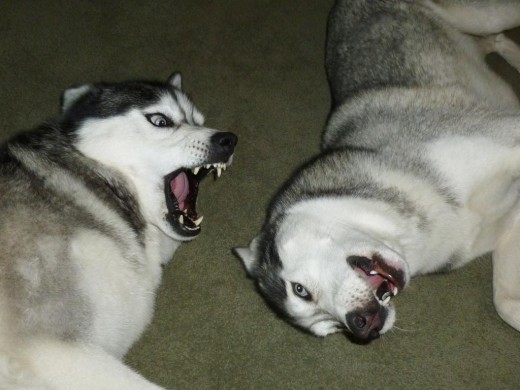
Here are some important questions I ask while trouble-shooting my dog’s undesirable behaviors.
What?
What triggers the behavior?
Is it large dogs, small dogs, dogs with long hair, dogs with floppy ears, or all of the above?
Is it just dogs, or is it also cats, squirrels, children, old people, people wearing weird hats, people carrying umbrellas, bicycles, skate boards, or something else?
Why?
Why is my dog showing this behavior?
Is it due to fear of dogs, dislike of people, excitement, or dominance? I listen to my dog by carefully observing his body posture, and what causes changes in that body posture.
A fearful dog will try to make himself look small, and shrink away into a corner, or behind objects and other barriers. His tail or head may be down, and he may be showing signs of stress. In contrast, a dominant dog will usually have ears erect, tail up, chest out, and a forward looking posture.
It can be difficult to read a dog because the change in body language may be slight (twitch of the mouth, sway of the tail), and brief.
Some dogs may switch body language quickly, and others may ramp up to dog aggression before we can react.

Step 2 – Retrain the bad dog behavior

a) Do not reward bad behavior.
Some behaviors develop because we inadvertently reward our dogs for them.
For example, when a dog jumps on us, we usually push him back with our arms and hands. This rewards the jumping behavior by giving the dog what he wants, i.e. our attention and a fun game of arm wrestling.
Similarly, we may give our dog more attention when he barks, whines, or vocalizes. This rewards the vocalization, thereby making the dog more likely to repeat those behaviors.
When my dog is showing undesirable behaviors, I either redirect him, ignore him, or put him on a time-out (i.e., temporarily withdraw his freedom).
b) Stay calm and in control during bad dog behavior.
When dealing with a bad dog situation, it is difficult but necessary to stay calm and in control.
Dogs can easily sense our inner energy through scent and sound. When we get angry, frustrated, or otherwise unbalanced, our dog will detect that, and become even more frantic. The only way to calm him down, is to stay calm and in control of the situation ourselves.
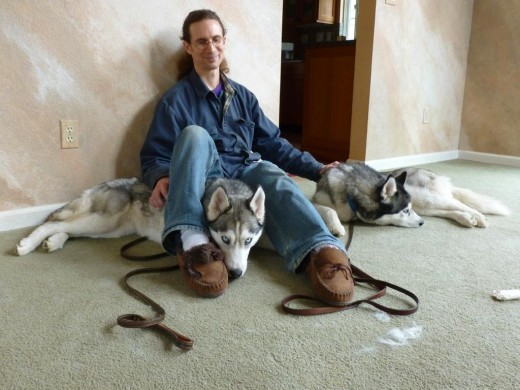
c) Redirect the bad dog behavior.
When a dog does something bad, we want to communicate to him that this behavior is undesired by us. I use a consistent no-mark such as No or Ack-ack. However, do not make the mistake of just stopping there.
We should always try to follow up the no-mark with a positive behavior.
For example, after saying No,
- I ask my dog for a Sit or Spin,
- I encourage him to play with a toy, or
- I tell him to go to his bed.
Which redirection we use will depend on the temperament of the dog, what the dog knows, and the situation at hand.
I mark (Yes) and reward my dog well with treats and praise when he stops his bad behavior, and redirects onto the new activity. If we are consistent with our redirection and rewards, our dog will learn to perform the positive behavior on his own because it gets him good results.
For redirection to work, we must stop our dog before he escalates his bad behavior.
If we let him escalate his behavior, he may get too frantic or excited to listen to us. Once in this state, it is best to remove him from the problem stimulus. Sometimes, a stimulus may be so strong that a dog escalates very quickly, and it may not be possible to redirect him onto something else.
In these situations, I find that it is best to first practice controlled desensitization exercises with my dog.

d) Desensitize our dog to the problem stimulus.
Flooding
Instead of dog desensitization, some trainers may use flooding. With flooding, we expose the dog to large doses of the bad stimulus, and force him to endure it until he stops being frantic or afraid.
Flooding is a common technique used by Cesar Millan, in his Dog Whisperer program.
The advantage of flooding is that it can bring faster results. The danger of flooding, is that it can cause a dog to totally break down and become even more psychologically damaged than before.
Imagine locking a claustrophobic patient in a small room with his psychiatrist until he snaps out of it. Either he gets better really quickly, or he totally snaps. It is best NOT to use flooding techniques because it can be risky and dangerous.
Desensitize our dog to a stimulus, by first exposing him to very low levels of the stimulus, under supervision.
For example. if my dog is aggressive toward other dogs, I can start desensitizing him with a very calm dog, that is not moving (e.g. in a Sit position), that is not focused on my dog (no eye-contact), and from a far enough distance. If my dog is reactive to the sound of thunder, I can start desensitizing him with a very low volume recording of thunder.
I only practice desensitization exercises in a quiet area, where I am in control of the environment.
- I start with a low level stimulus that my dog is able to tolerate, i.e. he is able to stay calm and listen. For example, I may position him some distance away from the “other dog” stimulus, in order to weaken it.
- I get his attention by calling his name, then reward him for giving me his attention and for staying calm. I can also ask him for other simple commands such as Sit, Touch, or Watch.
- Once I am comfortable with this, I very slightly increase the strength of the stimulus. For example, I may move one step toward the other dog.
- Then, I stop and get my dog’s attention again.
If my dog starts to react, then I have moved forward too quickly. I move back a few steps and restart the exercise.
I keep sessions short and rewarding so that my dog will begin to build confidence with each successful session, and learn to associate positive rewards with the previously bad stimulus.
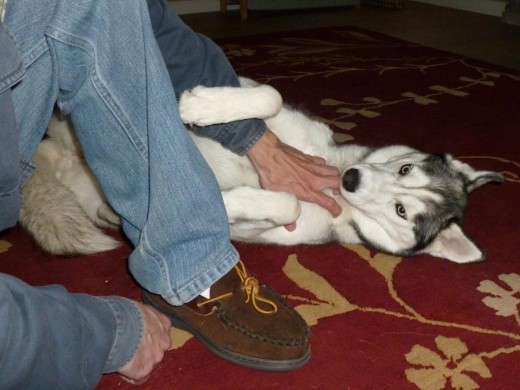
e) Set our dog up for success.
Remember to always set our dog up for success and keep him from repeating bad behaviors.
I properly manage my dog so that he is not constantly exposed to stressful stimulus that cause him to act badly. The more he practices the undesirable behavior, the harder it will be to stop that behavior.
I craft my retraining process to suit the temperament of my dog. In general, I focus on one or two bad behaviors at a time, so that neither me or my dog will become overwhelmed.
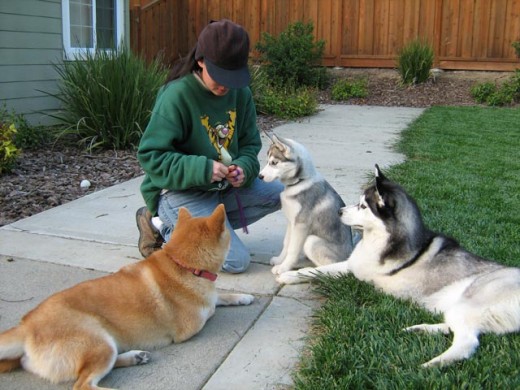
Step 3 – Prevent future bad dog behavior

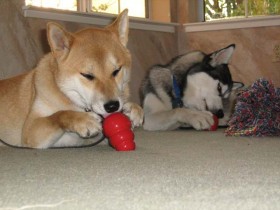
One of the best ways to prevent future bad behavior, is to provide our dog with many interesting, sanctioned activities and toys.
Many dogs resort to undesirable behaviors because they are bored. If we do not provide acceptable activities for our dogs, they are left to devise their own activities, which rarely appeal to our human sensibilities.
A dog who is well-exercised, both mentally and physically, is happy to just lie around and turn over for belly-rubs. A dog who is cooped up all day, with no company, and no activity, will be very frustrated and destructive. He may chew up our house, bark, charge the fence, escape, or perform a variety act from the “bad dog greatest hits album”.
This will end up costing us a lot of time, money, and emotional stress.
If we are busy during the day, consider dog daycare or dog walking. This gives our dog something interesting to do, and helps him brush up on his social skills with a variety of people and dogs. The rewards we receive will more than outweigh the costs, because instead of coming home to a chewed up house, we will be greeted by a tired and happy dog that just wants to rest beside us.

Hi Shiba Shake. I have a 7 month old, spayed shiba girl. I live in a mixed household of family members. I’ve taken Suki to training when she was old enough. She is very well socialized. My issue is she is starting to get aggressive to me. It started by biting my feet in a rapid biting action. I told her firmly no and ignored her. Then when I pet her (she initiated) she turned and snapped at me. This has happened on a few occassions. I work with her training and try to keep the sessions short. She has gotten defiant about the training although I keep it upbeat and try to finish on a positive note. The trainer said to tether her to me to control the atmosphere but did not go into details. She isn’t overly pushy about her food so it is hard to control her food. I was hand feeding her but on the about the fourth feeding, she snapped at me. I put her into a submissive down until she calmed down. I’ve talked to her vet and vet tech who has a pack of shibas. they both said they use the submissive down when their dogs get like this. I’m not sure what the right thing to do is. HELP!
Hello. Thank you for the above advice. My wife and I could really use some help right now with our dog. We have a 10 month old Shiba Inu. She has been a handful, but so far we have managed very well and love her very much. The past couple of weeks out of no where she has now been waking up at about 3am and barking non stop until we get up at 6 to feed her. We have tried telling her no, uh-uh, putting toys in her crate at night before bed, and just plain ignoring her and she wont stop. Also, it is not normal barking. It is barking we have never heard or seen before. It is aggressive and loud and she shakes her whole body and seems very angry and upset. There is intermittent growling as well. Also, in this time frame she has pooped in the house twice which she has never done. She had recently been to the vet and is all clear (except for her giardia, she has had that since we got her and the doctor said it was chronic for her, but that’s another issue.) We do not know what to do and what is causing it. We have two cats and the dog and them are separated because they do not get along. However, the cats do roam at night. But we haven’t had any problems till recently. Not sure if it is them or the fact that she can no longer go to doggy day care where she has multiple dogs to play with because the doctor said she has chronic giardia and cannot get rid of it. Likely passed down from her mom since we got her from a breeder and shes had it since we got her. Any help or advice would be greatly appreciated! Not sure if she needs more exercise, but it is hard to do when its freezing outside. Thank you!
I have the same issue with my 7 months old puppy, we were unable to take her to puppy class because of her giardia ever since we got her at 3 months old. I’m having a hard time to socialize her to the vet and other dogs, she would try to bite the vet and gets very excited and bad around other dogs. for exercising, I live in Canada, so the weather gets very cold by late October, but I still try to take her 2-3 time a per day, 45min-1hour each time so she can get her energy out and not get anxious/bad in the house.
Great post! Two months after we adopted our amstaff she started whining and being very vocal to get our attention. It was cute at first but then she started doing it all the time. We didn’t know we were rewarding her behavior by giving her attention. So, we learned that it was best just to ignore her.
Hello there! I am so frustrated with my dog and need help! We have a 2 yr old pug/American bulldog mix. We got him as a tiny puppy from a pet store. I was not working at the time and spent 4 months raising my little fur child until I found a job. I gave this little guy so much love, so much of my time. We’d play outside all the time and I covered him in kisses. He had so many toys. We also crate trained him right away. Because I was not working I took him out to potty EVERY 2-3 hours until he was potty trained. We had a great routine with him, structured environment. He had problems with biting, my hands were covered in puncture wounds/scabs. He was also very aggressive with play. We could never play with him for very long, he would begin to growl, lunge and bite. We would immediately walk away to discourage this behavior yet he still continues with aggressive play to this day. I remember the exact moment I knew deep down that he would be a handful. He had bit my ear so hard it bled down my neck. He would also bite my nose when I was snuggling him/trying to give him kisses. He became destructive with his toys. He wouldn’t play with them he would just tear them to shreds. He began tearing up the couch and the rugs. If we were present when he did this we’d put him in a crate for timeout. This was not successful, he still continued to destroy. One day he was in timeout 8 times, no lie. He dug a hole through the wall one day, we came home to a huge mess. My husband worked very hard teaching him commands and he learned very quickly. He knows his commands but when he doesn’t want to do what we ask, he doesn’t do it. He began bolting out the front door. He would approach neighbors/other dogs so quickly that they would get scared. He bullies dogs that are smaller than him. Is very rough with puppies. He knocks toddlers/small children to the ground. He rockets his entire body into people. He has knocked almost everybody down in my immediate family. When I picked my mom up from the airport he jumped out of my truck window, onto my mom knocking her on her back on pavement. We tried clicker, then your training. Unsuccessful. You tell him no biting, and he jumps up to nip your hand. Since we got him we exercise him as much as we can. Currently I run him for 45-60 minutes a day before work. This includes fetch, stick throwing and me chasing him because he loves that. When I’m working my husband is home so he is rarely home alone. We give him puzzles and he solves them then destroys them. He is not food driven or positive reinforcement driven. I honestly believe he is crazy. I have come to think of him as an emotional terrorist. He is manipulative and frankly a jerk. My husband gets up with him in the am and walks/feeds him. I get up about an hour later and he frantically gestures that he needs to go outside when he’s just been outside. He paces around until I have to ask him to lie down then stay. He lies down for a little bit then gets up, disregarding the stay command. We have trained him that “Ok!” means he can get up so he knows he’s defying my stay command. I have battles like that with him all day. Yesterday it took us 7 tries of me calmly telling him to sit before he actually sat. He just stares me down and blatantly refuses to do what I ask even if it’s to his advantage. I was only asking him to sit before he gets out of my truck (we have been doing this for a year) so he could play at the park. His behaviors have changed but not in a good way. Now when I take him to the park and try to play fetch he runs to the ball but won’t bring it back to me. If he sees something across the park (another dog/person) he only focuses on that to the point where he won’t play with me/run around he just sits and looks at it. What is also weird is that if I let him investigate a person/ other dog while he’s on the leash he turns into a monster jumping/smashing the other dog etc OR he puts his ears back, growls and slinks around OR he wants nothing to do with them. It’s the people that really want to pet him that he wants nothing to do with. We take him to doggy daycare twice a week. He is there for at least 9 hours. Some days he comes home as hyper as he left and we know he’s been in timeout… a lot. They tell us he plays too aggressively with other dogs and has to go to timeout. He doesn’t let me pet him. He just sits and stares at me a lot which is a little unnerving. If I’m on the couch I invite him up after he sits/shakes etc (he has to earn being on the couch) and he just stands on me like he’s trying to dominate me. I can’t do this for 10 more years, he is not an enjoyable dog. I have had 2 other dogs before him and my experiences with them were amazing. I’m also concerned because we are trying to get pregnant and I would not trust this dog with my baby/child.
Hi Shibashake!!
You and your Dad are fantastic!! I sure could use some of your wisdom! I got my new Shetland Sheepdog at 8wks, one week ago. I have had two other shelties, trained them myself and they were wonderful. I trained them with praise, and treats, using treats less than most people do. Shelties love to work and love to please so training was very easy. Housebroke both in one day, I had each one at different times in my life. One was a pet therapy dog. I did all the training myself. This new little guy I have now I found out was separated from his mother at 5/6 weeks and taken to a second breeder who is known for neglecting dogs. I think she kept he and his siblings in a dark room 24/7 no human contact, underfed them and lots of grabbing by the back of the neck. I did my research and breeder number one has a great reputation but due to an illness of a family member she gave the puppies to breeder number 2. The first night my little puppy came home he snarled, growled, and bit at me when I would not let him down from the bed. We had driven 5 hrs and he was fine. But I did not want to start crating training that night as I thought he might be stressed. He has done this many time since. Telling him no, can trigger this. For instance with my shoe laces, I say no, try to give him a toy, but he is set on the shoe lace and could care less about the toy. Sometimes I cannot walk to get a toy or treat to redirect because he has my shoe lace in his mouth. I have used a spray bottle of water, which does not work. If I have a treat in my hand he will let go but then go right back to the shoe lace. I then crate him for a time out, 5 minutes. Its hard to carry treats all the time. I tried the holding down technique which I was against but everyone said it would work. Well you know that didn’t. I fear he was badly damaged by this breeder and the lack of the mother. He is not a cuddler due to what has happened to him and he bites constantly. I have bought him a Kong but he was bored with it after a few minutes. I will try your suggestion of frozen food. He is such a completely different sheltie that I am not sure what to do other than use treats to train him for everything. I have cried every day since bringing him home as it has been so very hard to know what to do for him. I have tried finding a trainer but have not been able to yet. Any suggestions? I would happily pay you for your time. Thank you for listening. Alexandra
Hi there I have a two-and-a-half-year-old Jack Russell Chihuahua who is very loving and very sweet but lately he’s been getting extremely aggressive with me I can’t even put his harness on to walk him without him growling at me and coming at me to bite me and if I do get it on I can’t get it off of him when I’m done walking him I don’t know why he started doing this it wasn’t a problem before but it has bitten me twice now drawn blood and I’m very worried about him. He does have an older brother who’s four years old who is a deer chihuahua they get along very well they always go on walks together I just don’t understand why my younger puppy is being so aggressive with me now please help I’m in dire desperate need thank you Phoenix Arizona
Hi,
My dog is a 7 month old Mini Golden Doodle. We just recently got her… but my parents are already talking about giving her away due to some behavioral problems. For example, we just recently bought a new couch and 3 times she has already urinated on it… and she also has pooped once and peed once on the foot rest. Also, whenever she is in her crate, she never stops barking!
Do you have any suggestions?
Thank you so much for your time!
I am trying to learn to understand my dog, and all dogs, better. I want to provide my dog the best possible life she can have. A Google search brought me to your site. I plan to read every page of your site because the information is invaluable. Thank you for all of the amazing information you provide on this site. It is truly a blessing to me.
My name is Jan. I have a 6 month old puppy. She has been doing to day camp almost daily. When she. When she goes into the camp, other than pulling so she can get there faster, she is fine. But when she comes out she is very aggressive toward any stranger. She pulls on the leash, like she is trying to attack. Yesterday she was in my car and saw a group of boys talking. She started lunging, barking, and then her whole body was shaking. I did get her away, pulled into my garage. She calmed down. What should I do?
You should take your dog out more to get socialized, I take my dog up to strangers a lot and ask them nicely to pet my dog and you can even hand them treats to give to your dog. This will start making your dog see strangers as something good.
Halo Shiba Shake and everyone!!
I am a from Hong Kong who owns a 4 months old male Shiba . I owned him since he was 2 months old. He used to hv no food protective behavior . We can tough all parts of his body . But he developed food protective behavior when he was 3.5 months old suddenly . He no longer let me touch him otherwise he will bark to me and then bite me . The most strange point is he will bite me once he finished all his dogfood.. The first time he bite my mouth suddenly when I sat down and play with him while he just finished his dogfood . And the second time was he jumped and bite my hand when I walked pass him as he finished his dogfood and lying on the ground quietly .
I really can’t figure out what is happening…
Do u all have any experience on it …? Thank you for answering !!